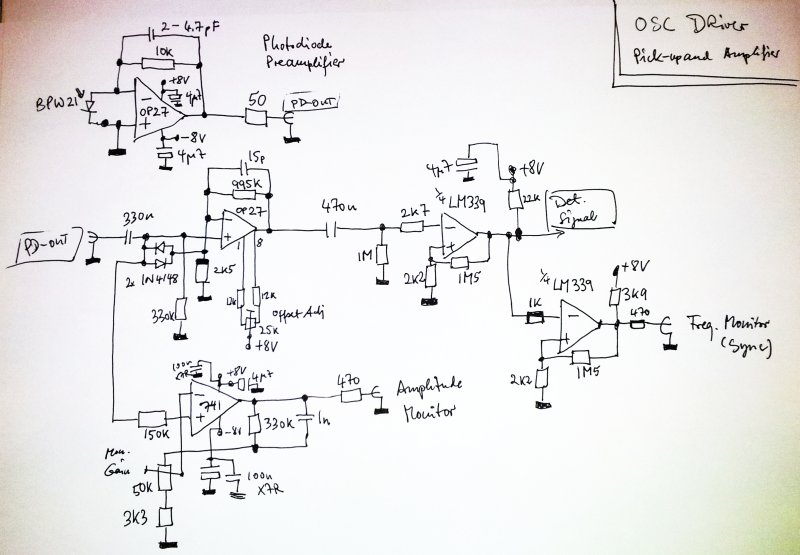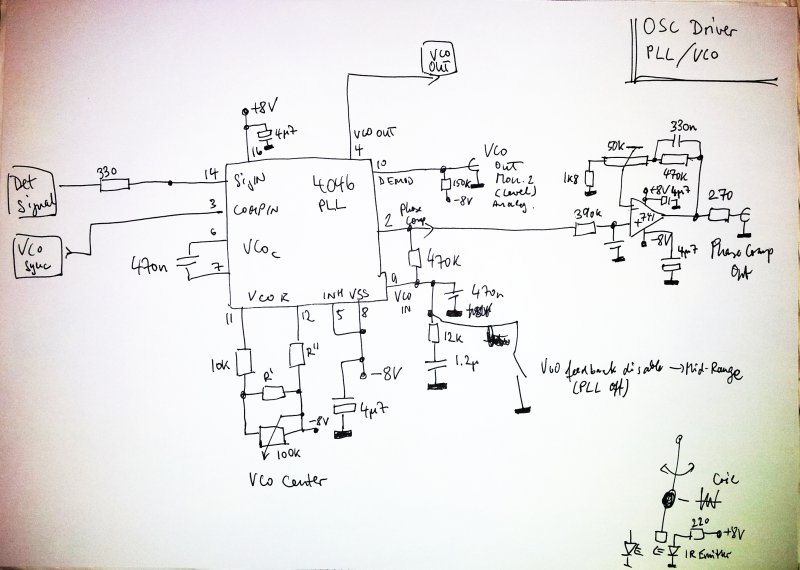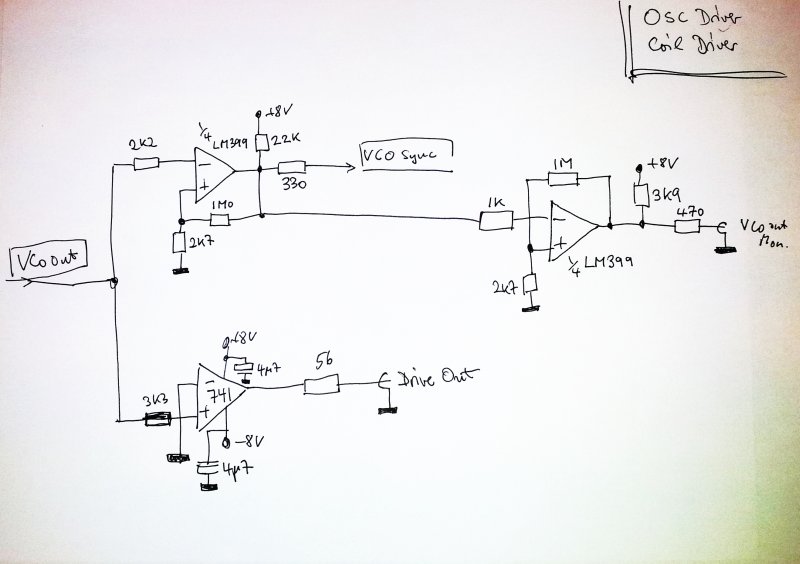Recently, a “very special” circuit had to be designed – a driver for a mechanical oscillator. The objective – to find the natural frequency of such oscillators, to a very high degree of precision, and at very small amplitudes, in the µm range.
Measurement of the frequency is easily done by a frequency counter – what is needed is a circuit that keeps the oscillator going at a constant amplitude.
The oscillator (a mechanical tuning fork, metal tube) carries a small magnet that can be used, together with a stationary coil, to make is oscillate and sustain the oscillation.
The movement of the tuning fork is sensed by a light gate – an IR emitter diode, and a photodiode.
The oscillator is running at a few 100 Hz, in a very well thermostated environment.
First part, the photodiode amplifier, and signal conditioning circuits.

The second part, the PLL (a classic 4046), and some auxiliary circuitry to provide monitor outputs.

For operation at other frequencies – adjust the VCO timing capacitor, or use an external VCO.
The coil driver – and monitor driver, this is a very low power systems, a few milliamps are plenty for the coil.

